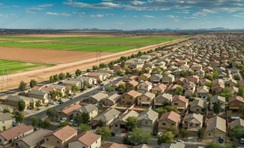The County will soon release a draft CAP for public review. The County’s first in-house draft was disappointing.
The Earlier Draft:
- Failed to reflect the County’s December 2020 Climate Emergency Declaration, including its urgency, substantive measures, and 2030 goal (learn more);
- Failed to review County land use policies which facilitate “leapfrog” development and high tailpipe GHG emissions (learn more);
- Failed to keep carbon-offset money local (learn more);
- Failed in proposing mitigation measures that were not feasible, enforceable, funded, or scheduled (learn more);
- Failed to provide robust public involvement as directed by the County’s Emergency Declaration, or even to equal other County planning outreach (learn more);
- And finally, the draft relied on SMUD meeting its 2030 carbon-zero goal, which is not at all certain (learn more)
The earlier draft is here and 350’s comments are here.
We hope the coming public draft will be a major improvement. If not, we’ll again ask you to weigh in, letting the County know you expect a serious climate plan. We’ll again provide a platform to make it easy. And we’ll let you know either way.
Thank you for what you do. You make all the difference.
The County’s Climate Emergency Declaration
The early draft CAP did not recognize the CED’s commitments:
- Goal: to achieve carbon-neutrality by 2030 (meaning the County would be removing as much carbon from the atmosphere as it is emitting by 2030).
- Urgency: to present urgent, short-term carbon elimination measures.
- Consultation: to explain the County’s approach to reach 3030 carbon neutrality, based on recommendations from climate experts, planners, community members, and economists.
- Funding: to identify resources needed to achieve 2030 carbon neutrality, identify funding gaps, and present recommendations.
- Task Force: to establish a Task Force of climate experts to oversee a climate plan for all County departments, which shall each report regularly on progress.
- Public Involvement: to support a strong public outreach program on needs, policies, and strategies, and to engage grassroots organizations, economic development partners, low-income and disadvantaged communities, youth, communities of color, and environmental justice stakeholders.
Land Use
Passenger cars are the County’s biggest source of GHG. The main driver of vehicle miles travelled is sprawl development which forces long commutes to jobs and services. Land use is under direct County control through discretionary approval of development permits, but the County’s de facto policy encourages sprawl development. About 90 percent of the County’s projected growth to 2040 could be accommodated through infill in existing urban areas, but the County has approved or has in planning nearly 400 percent of the growth demand, most of it in davelopments far from the urban center. (see Table below). Because the approved and pending housing far exceeds demand, it’s unlikely the proposed developments will be fully built-out. The result will be a pattern of small, widely separated housing tracts, difficult to provide with County services and impossible to serve with transit. 350 Sacramento advocates that priority be given to infill development providing affordable housing close to jobs, and services – not to ever-more urban sprawl.
Percent of Projected Growth Accommodated by Approve/Planned Development
[table id=5 /]Carbon Offsets
The County anticipates that development projects not wishing or able to keep their new vehicle traffic within State standards can “offset” their excess GHG emissions through purchase of carbon credits, which are supposed to assure prevention of emissions elsewhere or removal of carbon from the air. 350 Sacramento believes the CAP should require that any offset projects be located within the County, to keep investment and co-benefits local. Priority should go to electrification, energy efficiency, urban greening, transit, and pedestrian/bike friendly streets in our historically disadvantaged neighborhoods.
Effective Measures
Most of the early draft’s 58 proposed management measures are not credible because they:
- are described unclearly or in aspirational terms
- defer formulation of mitigation to the future
- do not clearly specify enforcement or other means of assuring implementation
- do not identify costs and funding
- proposes partnership or collaboration with uncertain effect;
- and/or do not include or clearly commit to a schedule of performance.
For example:
MEASURE VMT-11: INCREASED VEHICLE OCCUPANCY, The County will work with a broad range of agencies, including SACOG, to encourage and support programs that increase regional average vehicle occupancy
This meets neither the actual need for effective climate action nor the States’ standards for a CAP measures. To “work” with “a range of agencies” to “encourage and support”, is ambiguous language that commits to nothing. We need a serious plan that does better than that!
Public Involvement
The County’s Climate Emergency Declaration identifies the need for “unprecedented” public awareness about the County’s climate program.
However, CAP outreach is substantially less than for comparable (arguably less critical) County plans, e.g., the Re-Envision West Arden Arcade Plan, and the Active Transportation Plan Update. This pattern is set to continue in 2021.
Public Outreach – Three Current Planning Projects
[table id=6 /]Reliance on SMUD
SMUD has set an ambitious goal of generating 100 percent clean electricity (e.g., solar, wind) by 2030. This is not a mandated goal, and at this time SMUD has no clear plan to reach it. However, the County assumed that the goal will be reached, greatly reducing the County’s projected carbon footprint by 2030, and making the County’s own efforts seem much less necessary. This is wishful thinking because there is no reasonable assurance the SMUD will reach its goal, and we can’t afford for the County to sit on its hands while we wait to find out.





